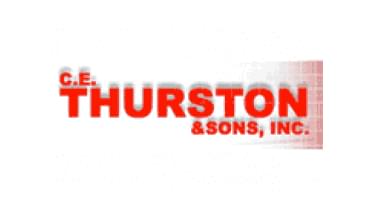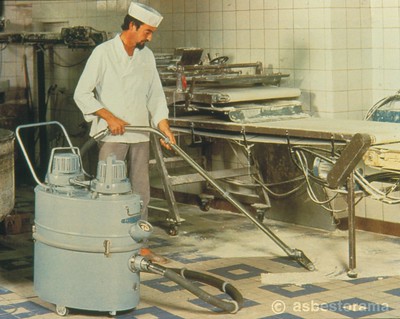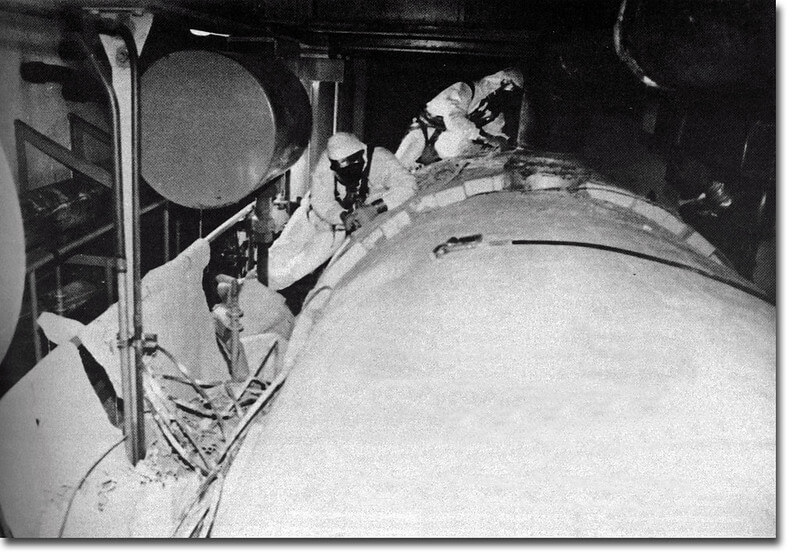C. E. Thurston & Sons
C.E. Thurston & Sons distributed, installed, repaired and removed asbestos insulation products until the late 1970s. Asbestos litigation forced the company to file for bankruptcy in 2003. A trust fund was established in 2006 with $53 million to handle asbestos claims.

C.E. Thurston & Sons’ History with Asbestos

C.E. Thurston and Sons became involved in asbestos litigation without ever manufacturing a single asbestos-containing product. Thurston installed, repaired, removed and distributed asbestos insulation made by other companies until the late 1970s.
Its liability stems from allowing former workers to handle the asbestos products of other companies while knowing it was hazardous.
Thurston employees who handled asbestos insulation and developed asbestos-related diseases went on to sue the company for compensation. The company has also been sued by people who worked around or removed asbestos materials installed by Thurston.
Development of C.E. Thurston & Sons Asbestos Trust
In 1985, Thurston and 33 other companies entered into an agreement, known as the Wellington Agreement, to manage asbestos claims. The agreement created the Asbestos Claims Facility to evaluate, defend and settle personal injury claims related to asbestos. It lasted for two years before certain companies withdrew and the agreement dissolved.
A similar entity, the Center for Claims Resolution, was formed shortly after the Wellington Agreement fell apart. The center operated until 2001, at which point Thurston handled claims on its own.
By 2003, Thurston could not handle the cost of asbestos litigation and was forced to file for bankruptcy. It emerged from bankruptcy in 2006 and created the C.E. Thurston & Sons Asbestos Trust, which remains active and handles all asbestos claims.
In December 2017, the trustee increased the payment percentage from 35% to 50%. This percentage is considered high compared to other asbestos trusts.
In September 2021, the trust extended temporary policy changes made to help claimants filing a claim amid the COVID-19 pandemic. For example, affidavits may be signed electronically with one witness and do not require a notary.

Gain access to trust funds, grants and other forms of compensation for you or your loved ones.
Get Help NowAsbestos Litigation Involving C.E. Thurston & Sons
C. E. Thurston & Sons has faced thousands of asbestos-related lawsuits because of its distribution of asbestos products.
In 1997, prior to filing for bankruptcy, the company was part of a precedent-setting asbestos case that involved the Federal Enclave Clause, which protects government lands from being sued in asbestos litigation.
Case of McCormick v. C. E. Thurston & Sons
In McCormick v. C. E. Thurston & Sons, the wife of Paul C. Cochran filed a wrongful death lawsuit on his behalf. Cochran died from mesothelioma cancer after being exposed to asbestos while serving aboard the USS Nimitz.
The USS Nimitz was docked at Norfolk Naval Base (considered a federal enclave) for part of its tour, but the plaintiff argued that a Navy vessel cannot be considered a federal enclave. The court agreed.
The decision made it clear that defendants of asbestos litigation involving Navy vessels could not remove themselves from cases by claiming circumstances under the Federal Enclave Clause. The case is often cited in current asbestos lawsuits.
Workers at Risk of Exposure to Asbestos Products Installed by Thurston
Occupations that may have worked around asbestos products installed or distributed by C.E. Thurston and Sons include:
- Insulators
- Industrial workers
- Power plant workers
- Chemical plant workers
- Factory workers
- Tobacco factory workers
- Paper mill workers
- Railroad workers
- Shipyard workers
- Veterans of the armed forces
Although Thurston did not manufacture asbestos-containing products, it did employ workers to distribute and handle asbestos insulation until the late 1970s. As a result, some of their former employees have developed asbestos-related diseases such as mesothelioma, asbestosis and lung cancer.
Anyone who worked with asbestos products distributed by C. E. Thurston, even after they were installed, was at risk of asbestos exposure.

Asbestos products were commonly used by the shipbuilding industry, and Thurston had a close business relationship with the Norfolk Naval Shipyard. Former employees of this yard may have been exposed to asbestos insulation installed by C. E. Thurston employees.
A 2018 review published Environmental Health shows insulation workers had one of the highest mortality rates among asbestos-exposed Italian shipyard workers employed between 1960 and 1981.
Insulation installers and removers who worked with asbestos-containing insulation products are at high risk of developing mesothelioma or other asbestos-related diseases.
C.E. Thurston & Sons History
C.E. Thurston started the company in 1919 to provide contracting services for mechanical packing manufacturers in the southern part of Virginia. The company quickly added insulation contracting to its business, offering distribution, installation, repair and removal services.
With business booming, the company became C.E. Thurston & Sons in 1946 and steadily expanded its contracting services throughout Virginia.
In 1991, Thurston acquired the South Carolina insulation contractor Mechanical Insulation Services Inc. One year later, the company acquired North Carolina-based Ambrose Insulation Company.
Although these acquisitions showed growth for the company, it was forced to file bankruptcy in 2003 because of asbestos claims. After emerging from bankruptcy in 2006, the company was still conducting business in 13 states.
Today, Thurston provides contracting services including asbestos abatement, safety training and insulation services for mechanical, marine and cold storage applications. It also distributes products such as adhesives, hand tools, machine tools, pipes and safety products. The company serves customers in commercial, industrial, marine, power, pulp and chemical industries.
Recommended Reading


